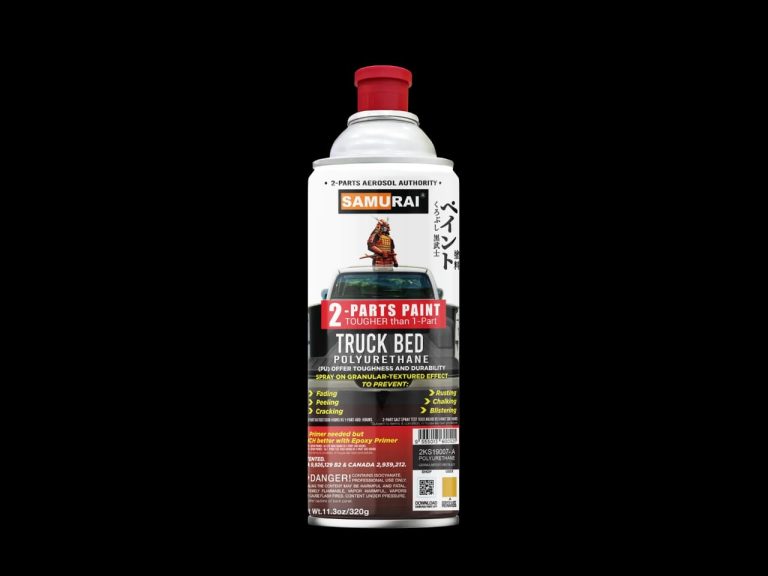A clear coat is the final coat of paint that applied to the car, going over the epoxy and base coat. It’s a transparent, tough, and glossy coating that adds more than just shine to your car. It’s a protective layer against abrasion, scratch, dents, and corrosion to the car’s exterior
When it comes to car painting with 1-Part Paint, clear coating is almost a necessity as 1-Part Paint itself has low glossiness and resilience.
However, a clear coat becomes optional when it comes to 2-Part Paint. Why clear coat isn’t necessary for 2-Part Paint? Here’re the reason:
High glossiness and color retention
Because of the different chemical compounds, 2-Part Paint is able to give a high gloss attractive finish which can withstand the impact of UV rays that causes fading.
Contain hardener
The hardener makes a fully cured 2-Part Paint forms a very hard, durable, and hard-wearing surface that provides enough protection against abrasion, stains, and scratches.
Although the clear coating is unnecessary for 2-Part Paint, you can still spray a layer of clear coat on a 2-Part Paint to achieve the mirror-like finish and extra protection, the decision comes down to a matter of personal preference.
However, there are a few things you need to keep in mind. First, be sure to use a high-quality clear coat that is designed for automotive use. Second, make sure the surface is clean and free of any dirt. And finally, be sure to follow the instructions on the can of clear coating carefully so that you don’t damage the surface or the paint job.
When it comes to choosing a 2-Part paint for your project, you should take note of the followings:
- Longer potlife
- Easier hardener activation
- High gloss finish
- Durability
Samurai Paint is having revolutionary 2-Part aerosol paint can design that has only 1 valve. The unique mechanism is designed to simplify hardener activation and mixing process, improve painting experience and increase work efficiency.
Can I mix thinner with 2-Part Paint?
Paint thinner is a solvent that dissolves paint and reduces the viscosity of the paint so the paint can be used in a spray gun or any applicators like roller and brush. Both DIYers and professionals will usually mix a ratio of 4:1 paint to thinner in 1-Part Paint for easy application.
In this blog post, we will be discussing the most frequently asked questions about thinner and 2-Part Paint.
Can you mix thinner with bucket 2-Part Paint? Technically, yes, you can mix thinner in the bucket paint, but it’s unrecommended. An improper ratio of thinner will affect the curing time or causes the paint takes forever to cure. Even if it cures, the paint can’t provide optimal protection, toughness, and durability, peeling may occur within a few months.
Can you mix thinner with 2-Part aerosol paint? The short answer is no. That’s risky and even impossible to mix thinner with the sprayed paint and apply the paint with a roller or brush. Aerosol paints are formulated with the optimal ratio of hardener and resin, additional thinner affects the finish, potlife, and curing time.
Can you use thinner to remove 2-Part Paint? Yes. You can use thinner to dissolve or clean the paint stains. However, certain thinners will melt plastic surfaces, be sure to follow the instructions on the can of thinner carefully so that you don’t damage the surface or the paint job.
One last thing you need about thinner and 2-Part Paint is you need to first know that there’re different thinners for specific applications. Oil-based and latex paints will require different thinners to dissolve the paint. Read the manufacturer’s recommendation on how to use the right ratio of paint to thinner.
How to remove old paint on a car?
Removing old paint is a crucial step before applying a fresh coat of paint to your car, this is to ensure that the new paint can adhere better and last longer. DIY stripping the old paint is much more cost-effective than having it removed professionally in a workshop.
Improper old paint removal is one of the reasons why many DIYers fail at achieving a smooth and durable finish. If you don’t take the time to properly remove the old paint, the paint job will likely suffer from poor adhesion, uneven coverage, and early wear and tear.
To avoid these issues, be sure to follow these tips for how to get a smooth, even finish when stripping old paint:
-Load a dual action sander with 40-grit sandpaper.
Another better option is sanding by hand, this can avoid damaging the car body. However, this can be extremely time-consuming.
-Sanding on a large and flat surface
Some spots are tougher than others, keep the sander on the surface for a few seconds to remove the paint.
-Open doors, trunk, and hood to access hard-to-reach areas.
Remember to cover the cushions with a sheet to protect the interior from the sanding dust.
-Sand with 120, 220, and 400-grit sandpaper
Use 120, 220, and 400-grit sandpaper to do another sanding round to removes small sections of rust that hard to be seen. Wipe the car in between every sanding section.
-Wash your car
Wash the car after sanding to remove dust.
-Let it dry completely
Let your car dry thoroughly and you’re ready to repaint it.
Following these tips will help you to remove old paint properly without damaging the bare metal of your car. Choosing a good quality 2-part paint is crucial in keeping your car looked new and with proper preparation and care, your paint job will last for years.

